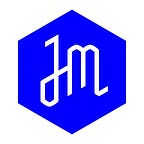Highlighting New Acquisitions in Honor of Women’s History Month
Learn more about works by Carrie Mae Weems, Gloria Kisch, Barbra Levittoux-Śeiderska, Lillian Bassman, Julia Weist, and Ethel Fisher, now part of the collection
Broadening and enriching the collection with new acquisitions— including paintings, sculpture, photography, and Judaica — is at the core of the Jewish Museum’s mission. The Museum has been actively working to bring more pieces by women into the collection. Here are some of the newly acquired works — by Carrie Mae Weems, Gloria Kisch, Barbara Levittoux-Śeiderska, Lillian Bassman, Julia Weist, and Ethel Fisher — that we are proud to have recently added.
For over three decades, Carrie Mae Weems has been working simultaneously in front of and behind the camera, making herself into an everywoman who acts as a witness and guide into the past. In the above photograph, the muse (as Weems refers to her alter-ego), with her back to the camera, leads the viewer through the Jewish Ghetto of Ancient Rome towards the sunlit Tempio Maggiore di Roma (the Great Synagogue). One of the many photographs by Weems that broadly explores the dynamics of power and public architecture, it invites us to share the muse’s perspective as we confront such historically charged sites. Weems’s background–a mix of African American, Native American, and Jewish ancestry–presents a complex framework for understanding her interrelated lines of inquiry into sites of historical trauma such as this one.
This imposing menorah is emblematic of artist and designer Gloria Kisch’s mature work in metal sculpture, the category of production for which she is best known. While Kisch’s use of stainless steel and her formal vocabulary are drawn from industry, her menorah’s elegant proportions and visible welds create a sense of refinement. Raised by a prominent collector of historical Judaica, Kisch made at least two dozen menorahs over the course of her career, continually reimagining the form of this ritual object while adhering to the requirements of its use. Menorah II was displayed on a partition wall in Kisch’s family’s loft, where it was visible from several rooms at once.
Barbara Levittoux-Świderksa is associated with the Polish School of Textile Arts, a postwar group of women artists whose work explored weaving beyond the realms of the purely decorative, pushing the medium into an experimental investigation of textiles and fibers. Her work emerged at immense scales, in three dimensions, and with energetic, biomorphic form. The looping, open weave of Arrangement of Ropes III [Układ lin III], as well as the mix of cord thickness, highlights the intricacies of her knots. Her woven work often combined natural elements including wool and sisal fibers, tree branches, pine needles, and vines with man-made ones such as wire, plastic, or metal scraps. In both its use of unconventional materials and its loose, meandering stitches, this piece defies the utilitarian roots of tapestry, demanding instead a contemplative examination of its sculptural form.
Lillian Bassman’s early intention was to be a dancer, and she kept her eye for the grace in female movement that, she once said, “usually passes unnoticed in everyday life.” Her use of high contrast between her subjects and the clothes being displayed was unique at the time, allowing for a more artistic approach in an industry that traditionally had stringent formats. This was noted by Richard Avedon–one of numerous photographers whose careers she helped launch–who said she made “visible that heartbreaking invisible place between the appearance and the disappearance of things.” Indeed, her move toward a greater abstraction in her fashion photography privileged graphic art over material product to the point of being subversive.
Limits by Julia Weist is part of the artist’s Public Record compositions, a public artwork in New York City comprised of artist-created government records. The project was commissioned by the NYC Department of Cultural Affairs and the Department of Records and Information Services, who named Weist the Public Artist in Residence in 2019. Public Record consists of 11 photographic prints that explore the government’s relationship to artists over the last century, looking particularly at records featuring criteria for evaluating art, surveillance of individual artists, and notes on artists’ role in civic life. The images were produced using only equipment owned by the City of New York — cameras, lights, computers — and she was assisted by government workers during their regular work day. As a result, the artworks are subject to laws that outline how government records must be managed, including the requirement that they be processed, maintained, and made available permanently to the public.
Ethel Fisher was an American painter whose career spanned more than seven decades in New York City, Miami, and Los Angeles. Her work ranges across abstraction and representational genres. Fisher’s painting depicts German-born painter and collagist Ilse Getz (1917–1992), who fled to New York in 1937 and became a United States citizen in 1940. In the decade that followed, Getz studied at the Art Students League of New York, where Fisher also studied, making collages and constructions that incorporated found objects. The framed puppet-like figure to the left of Getz’s figure alludes to her artistic creations. Fisher uses a gridlike architecture inflected by color and space, characteristic of her portrayals of artists from this period. This portrait is currently on view at the Museum in the installation Personas: Artists on Artists.
